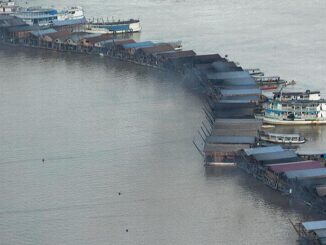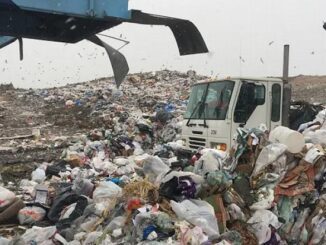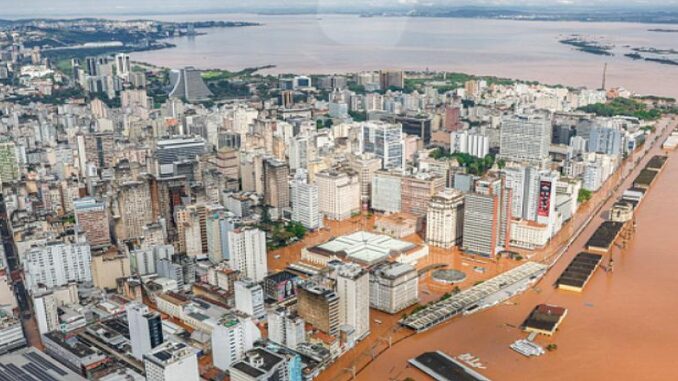
PORTO ALEGRE, Brazil, May 28, 2024 (ENS) – “You got into the mud, walked through flood water and had symptoms of leptospirosis? Seek health care, as there is treatment and we have enough medication. Treatment cannot wait, don’t stay at home thinking it will go away, as this could turn into a serious illness.” This message of alert and guidance to the people of the southernmost Brazilian state of Rio Grande do Sul is from the State Secretary of Health, Arita Bergmann, recorded on video for the social networks of the state government.
Rio Grande do Sul authorities have confirmed 124 cases of the waterborne leptospirosis disease after the region, just north of the Brazil-Uruguay border, experienced unprecedented floods in April and May.
Four people have died after catching the bacterial disease leptospirosis, which is transmitted through freshwater polluted with the urine of infected animals. When infected animals pee, the bacteria get into the water or soil, where they can live for months.
People can be infected by touching fresh water, soil, or other objects contaminated with infected animal urine. The most common ways to get infected is urine or contaminated water getting in the eyes, nose, mouth, or a cut or scratch. People can also get infected by eating contaminated food or drinking contaminated water.
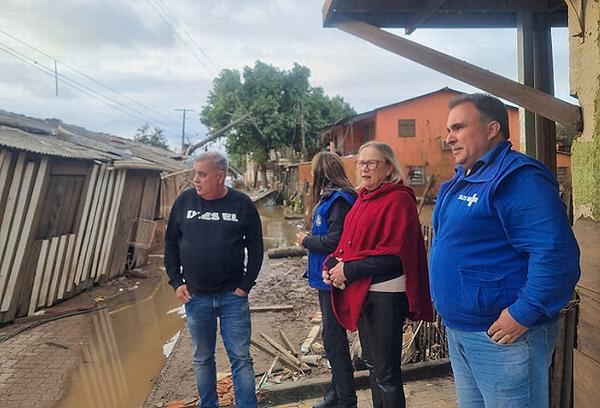
As many as 714 suspected cases are now being investigated, the state’s health department announced.
The state health department for Rio Grande do Sul, SES, has created an epidemiological report with reported, confirmed, discarded and under investigation cases of leptospirosis. The bulletin is published daily at saude.rs.gov.br/leptospirose. In the most recent update, dated May 26, 1,380 cases were reported, of which 124 were confirmed; 542 discarded and 714 are under investigation. Rio Grande do Sul also has four confirmed deaths from leptospirosis and 10 under investigation.
The overall death toll from the devastating floods in Brazil’s southernmost state of Rio Grande do Sul is still climbing. More than 165 people were killed in the floods and many others are still missing.
More than 2.3 million Brazilians from 469 municipalities in Rio Grande do Sul have been affected by what has been described as a “climate disaster” by the Brazilian government.
At least 581,000 people are displaced, while 55,000 people from Rio Grande do Sul have been housed in temporary accommodations, local media reports.
Many cities in the state are still under water and conditions could cause leptospirosis cases go increase.
Cities are facing dire situations, especially the state capital Porto Alegre, where 46 of the 96 neighborhoods are still underwater after flooding struck the region on May 14.
More than 77,000 displaced people remain in the capital city’s public shelters, and the state government has announced plans to build four temporary “tent cities” to accommodate those still displaced from their homes.
The Governor of Rio Grande do Sul Eduardo Leite, announced on May 24 that he will establish the Secretariat of Gacha Reconstruction, a new state portfolio with the mission of leading the state’s recovery process after what he called “the climate tragedy.”
Leite said Friday that the costs to rebuild will be “much higher” than the 19 billion reais (US$3.68 billion) he initially estimated.
Five of the seven main rivers in the state are still above the maximum water level, and experts find little hope the waters will recede soon.
The Guaíba River in Porto Alegre could reach a record 18 feet in the next few days, local officials warned.
Brazil’s Minister of Finance Fernando Haddad has said that the federal government is preparing direct financial assistance for families affected by the floods.
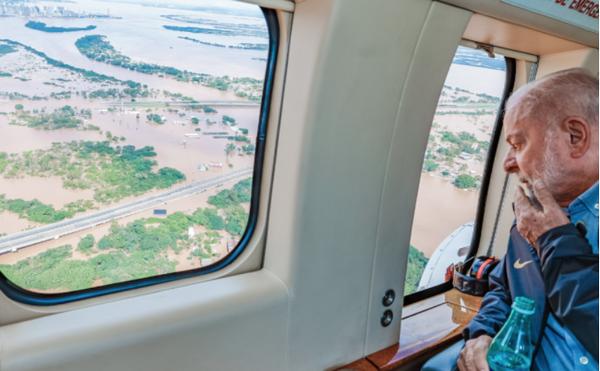
Brazilian President Luiz Inácio Lula da Silva announced National Civil Defense resources for humanitarian aid and reconstruction of damaged structures would be available to the region.
“Mayors and the state government can register requests for schools, daycare centers, health units, hospitals, and equipment recovery. Just register and it will start happening immediately to serve the people,” President Lula said during a live broadcast.
U.S. President Joe Biden released a statement on the ongoing crisis, saying, “The United States stands with Brazil at this difficult time.”
“My administration is in contact with our Brazilian partners, and the United States is working to provide necessary assistance to the Brazilian people, in coordination with Brazilian authorities as they lead the response,” Biden said.
Now it is nearly one month after the start of the heavy rains in Rio Grande do Sul, and the UN Refugee Agency, UNHCR, is expanding its response with national authorities to meet the needs of the most vulnerable. These include 43,000 refugees and others in need of international protection, mainly Venezuelans, Haitians, and Cubans, along with communities hosting them.
An estimated US$3.21 million is needed to support UNHCR’s response, including financial help and essential relief items for flooded out residents. UNHCR, with partners, is also prioritizing the re-issuance of lost documentation.
A team specialized in shelter management, documentation and the prevention of gender-based violence has been mobilized to the disaster areas and is coordinating the reception of relief items dispatched by UNHCR. The team is providing technical assistance to improve the running of shelters, especially in Porto Alegre.
The first Refugee Housing Units and sleeping mats arrived in the flooded area last Monday, from UNHCR’s warehouse in Boa Vista. Jerrycans, backpacks, adult diapers, tarpaulins, solar lamps, mosquito nets and sanitary and hygiene kits are on their way to Rio Grande do Sul. More items are being dispatched from UNHCR’s stocks in Colombia and Panama.
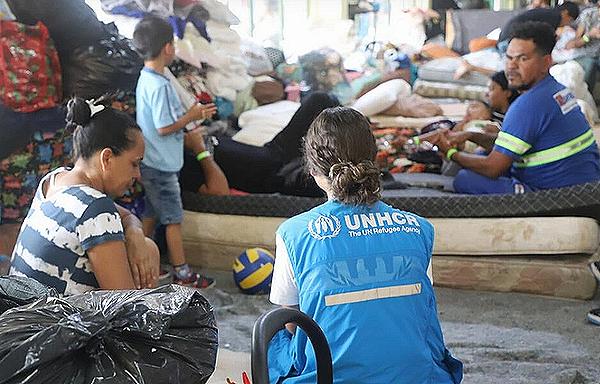
UNHCR and the International Organization for Migration are visiting shelters to meet refugees, those in need of international protection, and migrants to assess their needs and support the most urgent cases. Those interviewed have expressed concern about their futures, worried about when they can move and where they will move to.
Refugee-led organizations in Rio Grande do Sul have been collecting and distributing donations and volunteering at emergency shelters. According to government data, Rio Grande do Sul state hosts more than 21,000 Venezuelans who have been relocated from Roraima state on the Venezuela border since April 2018.
In April 2024, UNHCR launched its first-ever Climate Resilience Fund to build the resilience of refugees, displaced communities and their hosts to the increasing intensity of climate-change-related extreme weather events.
Extreme weather events in Brazil have been more frequent and devastating in recent years, and even with reduced rainfall and a drop in river levels, the situation in Rio Grande do Sul is dire. The weather forecast for the immediate future indicates rain and strong winds, electrical storms and possible hail in parts of the state. Today, a cyclone is expected to bring more rains with constant winds to the Rio Grande do Sul coast.
Featured image: The flooded municipality of Canoas, in the greater Porto Alegre area of Rio Grande do Sul, was photographed as President Luiz Inácio Lula da Silva flew over areas affected by the historic floods, May 5, 2024. (Photo by Ricardo Stuckert)

